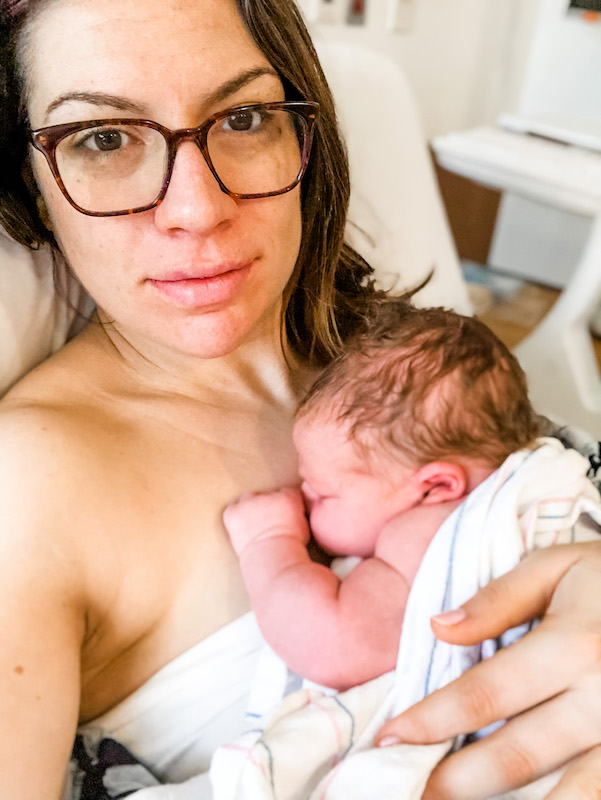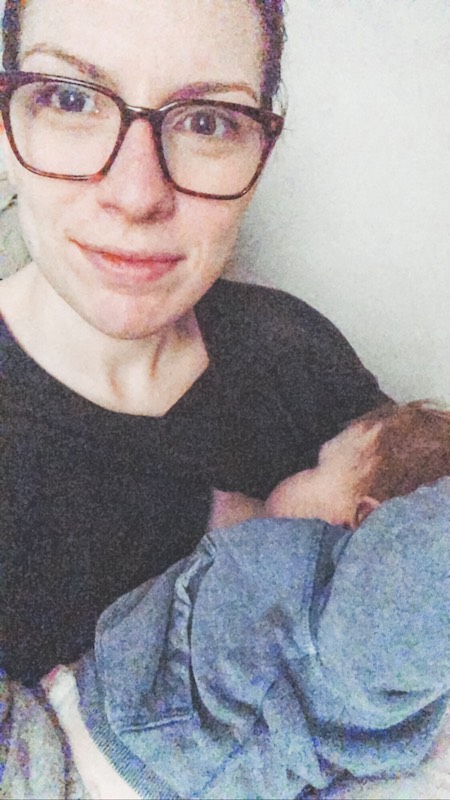Tomorrow is Jacob’s first birthday which means today marks 365 days of breastfeeding for us. It’s a leap year, so we hit this milestone “early”. I did not go into our breastfeeding journey intending to breastfeed for a year. In fact, I didn’t go in with any sort of goal or timeline in mind.

After my breastfeeding experience with TJ which ultimately consisted of a handful of very frustrating (for both of us) nursing sessions in the hospital, dropped blood sugar for him, and the decision to exclusively pump for me, I didn’t want to set myself up for any sort of disappointment or feeling like I didn’t reach my goal. I also knew that breastfeeding a baby would be a tremendous amount of work and a challenge to do with an 18-month-old to care for, too. That being said, I always felt like I kind of missed out on a “normal” breastfeeding experience my first time around so I wanted to try again to see if we could make it work. And make it work, we did.
Jacob latched beautifully from his very first time and has always been a patient feeder. By that I mean, he stays latched on for as long as it takes for him to get a full feed. One of the challenges with TJ was that he was a guzzler. He would get really frustrated waiting for let-down and then even more frustrated trying to fill his belly as quickly as possible. So bottle feeding worked well for him because it gave him control of the speed of his feeds. Jacob didn’t mind if it took 45 minutes to fill his belly. In fact, he preferred it. Slow feeds are his jam.
I’m not saying that because Jacob latched right away and is a patient feeder that our journey has been easy. We’ve managed silent reflux, laryngomalacia, a milk protein allergy, an FPIES diagnosis, back-to-back-to-back ear infections, and many an interrupted feed because of his big brother’s need of the moment. We developed a dependency on nursing to sleep. He straight up refused a bottle, so I was his only source of nutrition until he could drink from a cup. But, despite all of the challenges, breastfeeding Jacob for a year has been one of my greatest joys and fulfilling accomplishments.
I am by no means an expert, but I have built a bit of an arsenal of tips and tricks, and I know what has worked well for both my pumping and breastfeeding journeys. Here are some of the products that have been helpful for me through my experiences, and some tips I hope you find helpful!

Gadgets and Accessories
- Boppy pillow – this is still Jacob’s preferred feeding accessory. He loves lounging on it while he feeds, and it gives him easy access to stick his fingers in my mouth and/or play with my hair while he feeds, which he also loves to do. The Boppy is also a LIFESAVER for breastfeeding after a c-section – it helps keep baby off of your incision and allows you to sit up straighter while you’re feeding which reduces back pain.
- Haakaa pump – as an overproducer with an aggressive letdown, this little thing is worth its weight in gold. It suctions on to the breast you’re not feeding from and catches all the milk that would have been wasted into a nursing pad. It also helps pull milk out if you’re engorged, but doesn’t create an overproduction issue the way pumping an engorged breast can. I would catch 4-5oz on my opposite side during our early morning feeds in the first few months, and it’s such an easy way to start to build a freezer stash!
- Hands Free Nursing & Pumping Bra – invest in a good bra while you’re breastfeeding, and one with a hands-free pumping option if you’re going to be pumping at al. Trust me. I spent the first few weeks I was pumping for TJ fidgeting with holding the pumps and then switching out my regular bra for the zip-up pump bra, and it was more frustrating that it was worth. This hands-free bra by Simple Wishes has options for a full pull-down for breastfeeding and a hands-free pumping option, too. It’s comfortable, washes really well, and looks like a regular bra.
- Pump and bottle-specific cleaning products – I always found that regular dish soap left a film on anything with breastmilk on it, and I don’t like using the sponge that I use to clean other dishes to clean bottles and pump parts. I started using the Dapple Bottle & Dish Soap when I was washing pump parts one million times a day, and I still use it on sippy cups, straw cups, and snack containers. I also swear by the Dr. Brown’s bottle brushes and the Avent sterilizer
Breast Milk Storage
This is important. If you’re going to be storing breast milk in your fridge, freezer, or both, you’re going to want to develop a system. It makes pulling milk out to use so much easier, and helps save space. Here’s the system I’ve used for storage:
- Pool all pumped/collected milk from the day in as few containers as possible. Make sure you cool milk to the same temperature (all refrigerated) before combining
- Once you’re done pumping/collecting for the day, divide the milk up into manageable amount. I like storing in 2-4 oz increments – it makes it easier to pull out what you need while minimizing waste
- Store your milk in storage bags labeled with the date it was pumped, time if it’s from one pump/collection, and amount
- You can keep milk in the refrigerator for 3-4 days. I like to keep refrigerated bottles and bags in this tray – it helps use a first-in-first-out system
- If you’re not going to use the milk in the refrigerator, put it in the freezer as soon as you know you’re not going to use it. The sooner you freezer it, the better
- To freeze milk, lay the storage bags flat to save space
- Once I have a few days or about 40 oz of milk in the freezer, I put the storage bags into a gallon-size Ziploc bag labeled with the date range of the milk and the total ounces. This helps me know how much I’m pulling out of the freezer at a time and keeps my freezer much more organized
- Store your milk in the freezer with the most recently expressed milk on the bottom and oldest milk on top. That way, you’re taking the oldest milk out of the freezer first and minimizing the potential for milk to expire for you use it
- Take milk out of the freezer to thaw the night before you’re going to use it and put it in the freezer IN A TUPPERWARE. I cannot stress this enough. That way, if there is any leakage while the milk is thawing, it’s all caught in the tupperware container and you can still use it…and not cry because there’s breastmilk all over the shelf of your fridge…or so I’ve heard…
Like I said, I am by no means an expert and I’m sure I have more to learn, but I hope I can help at least one mama feel a bit more at ease about the overwhelming road that breastfeeding can be.
xo,
Stephanie
Recent Comments